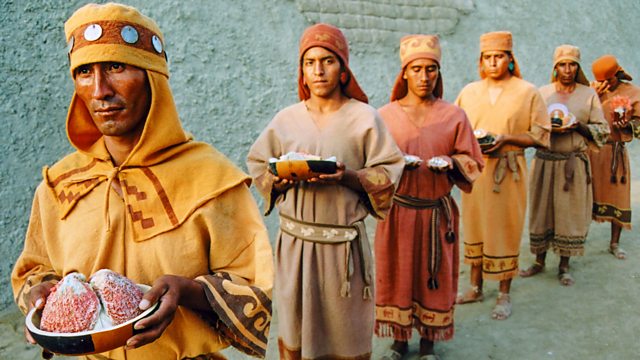Lost Cities of the Ancients episode 2: Tucume – In the Lambeyeque valley in northern Peru lies a strange lost world – the forgotten ruins of 250 mysterious pyramids, including some of the biggest on the planet, colossal structures made out of mud bricks. Long ago, the Lambeyeque people were haunted by a terrible fear and believed that building pyramids was essential to their survival. Their obsession reached its height at a city called Tucume, an eerie place of 26 pyramids standing side by side, the last pyramids this civilisation created before they vanished forever.
What was the fear that drove these people to build so many pyramids, what were they for and why did the whole civilisation suddenly vanish? This film captures the moments when archaeologists at the site uncovered a mass of bodies of human sacrifice victims, following a trail of clues into the dark story of Tucume. It recreates the strange rituals of the people of the valley, revealing a civilisation whose obsession to build pyramids eventually turned to horror, until Tucume finally vanished in a bloody frenzy of human sacrifice.
Lost Cities of the Ancients episode 2: Tucume
Túcume is a pre-Hispanic site in Peru, south of the La Leche River on a plain around La Raya Mountain. It covers an area of over 540 acres (220 ha) and encompassing 26 major pyramids and mounds. The area is referred to as Purgatorio (purgatory) by local people.
The site was a major regional center, maybe even the capital of the successive occupations of the area by the Lambayeque/Sican (800-1350 AD), Chimú (1350–1450 AD) and Inca (1450–1532 AD). Local shaman healers (curanderos) invoke power of Tucume and La Raya Mountain in their rituals, and local people fear these sites.
The vast plains of Túcume are part of the Lambayeque region, the largest valley of the north coast of Peru. The Lambayeque Valley is the site of scores of natural and man-made waterways and is also a region containing the remains of about 250 decaying and heavily eroded mud-brick pyramids.
